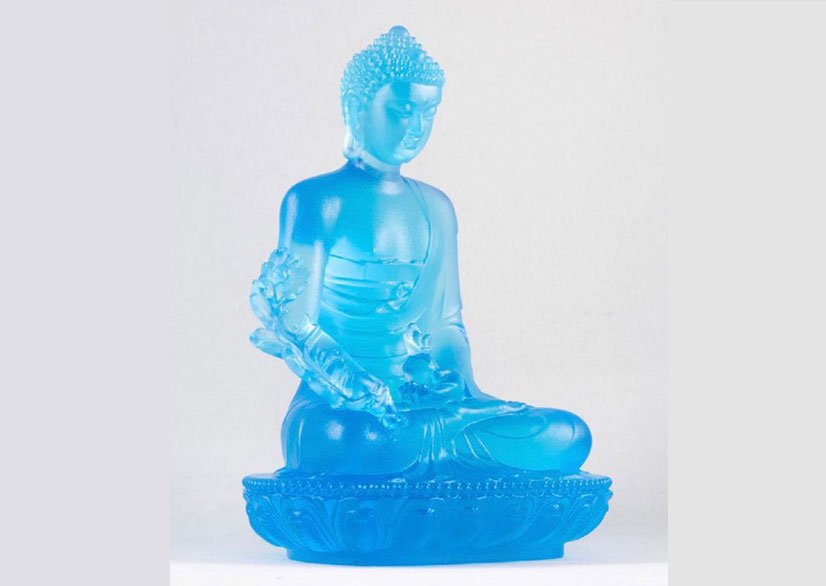You and Your Buddha Statue
During an 8.5-Day Health & Happiness Retreat, a first-time Bodhi Meditation student brought in his new online purchase of a white Buddha’s head. He asked if it could be blessed. A senior teacher advised him that the long crack in the skull did not make it conducive to his self-cultivation. Why? Let’s explore the journey of acquiring a Buddha statue for your practice
Why do we want a Buddha?
In Western culture, having a Buddha in the house or garden adds to the décor. However, for those who practice meditation, are self-cultivators, or Buddhist, the reason has nothing to do with décor, which is always disposable. In fact, the acquisition of a Buddha statue is a lifelong relationship. The Buddha statue symbolizes Buddha. After Buddha passed away, the statue became a representative of Buddha himself, so he could bless us.
As a practitioner, we want a Buddha in our house because we desire to be like the Buddha – wise and compassionate, seeking personal development, taking responsibility for our actions and helping others. The Buddha statue serves as visual imagery to remind us of Buddha’s life and lessons.
So, if we want to use this Buddha for our practice, we want it to embody perfection, so we can aspire to the goal of perfection through self-cultivation. In other words, we aspire to be like Buddha.
If the Buddha statue has a crack, a defect, damage or imperfection it’s not a perfect representation of Buddha. This can psychology affect beginner meditators. Fundamentally, it doesn’t matter if the statue is in perfect shape or not as it’s always a representation of Buddha. However, for a beginner, it’s better to have a statue that is perfect in order to avoid any trouble.
What should we look for when choosing a Buddha statue?
First of all, you want the statue to be the complete body of Buddha, not just the head. This again is because we want to be like Buddha, all of him. We want to respect his entire being.
How should we acquire a Buddha statue?
This question brings up more questions. Where should we acquire a Buddha statue? The best place to acquire a Buddha statue is from a temple or meditation school where it has been blessed. The Buddha statue can be old or new. What’s most important is that you resonate with the Buddha statue and respect it. Stand in front of Buddhas, close your eyes, and put forth a pure and clear intention to acquire the correct one. You will definitely know which one is meant for you.
Do not look for your Buddha at a garden shop or gift shop as these are sold for decoration, not for worship.

Is there a preferred type of Buddha we should use?
If you plan to use the Buddha statue for practice and worship, choose a major Buddha – Medicine Buddha, Sakymuni Buddha, Amitabha Buddha, Maitreya Bodhisattva, Guan Yin Bodhisattva or Earth Store Bodhisattva, because their vows are clearly stated. If there are different designs, choose one that you like the most. After choosing one, you can always add another.
Buddha statues can be made of wood, resin, clay, or stone. Any of these are acceptable. More valuable Buddha statues are made of jade or gilded in gold, which shows respect to Buddha. No matter which Buddha statue you choose, the most important thing is a sincere heart.
Old or new?
As long as you respect the Buddha, it doesn’t matter if a statue is old or new. One advantage of new Buddha statues is that they are unencumbered; they haven’t accumulated a history. It’s considered lucky if someone acquires an antique statue of Buddha. However, to truly know if it is an antique, it must come from either a trusted source or you must have the technique or ability to distinguish whether it is or not. It’s quite possible that a so-called antique Buddha is fake.
If the Buddha has sat on the altar of a self-cultivator for a long time, it brings with it more auspicious energy because of the self-cultivator’s compassion. There’s a scale to the energy of a Buddha statue, so Buddha from the home of a self-cultivator will have more energy than if it is from the home of someone who is not a self-cultivator. If it was owned by a head monk or was in the temple of a genuine master, then it will have even more energy.
In Tibet and Asia most everyone has a Buddha. Even if they aren’t self-cultivators, but are a happy, loving family with high morals and ethics, then that Buddha will have better energy than one that has been abandoned or used for decoration. If the Buddha has been in a family for a long time, and they sincerely communicated to the Buddha through cultivation (meditation practice, chanting, offering incense, water, fruit, candles or flowers), then the energy accumulated is not because it was in the family, or in a self-cultivator’s energy field, but because they had the Buddha with them in their heart, making offerings and showing respect.
New and old have their own advantages, so it’s up to your fate which one you will be able to acquire. Remember, when choosing a Buddha, new or old, choose one that’s blessed. No matter what type of Buddha or which one, depends on your heart’s intent, sincerity, and respect.
Read Part II for more information on where to place your Buddha, and more.

